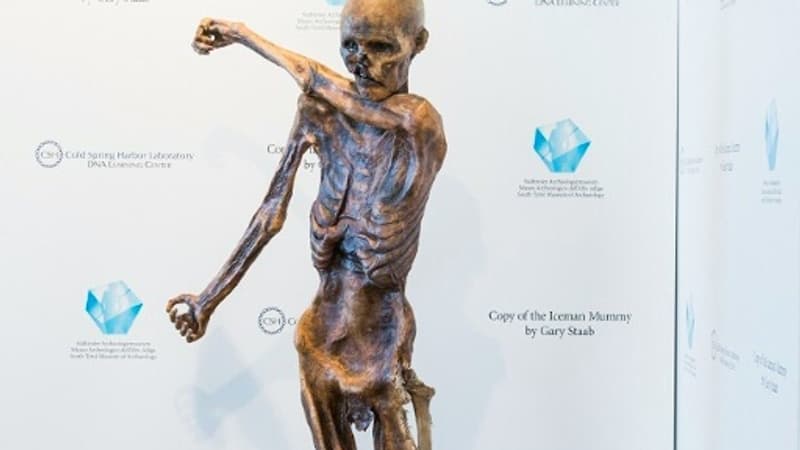The prehistoric iceman Ötzi had darker skin than previously thought and was likely balding, according to a study published Wednesday by the Max Planck Institute for Anthropology in Leipzig.
Analysis of the genome of Europe’s most famous mummy, dating back more than 5,000 years, also establishes that its ancestors were from Anatolia, adds the German institute, which conducted the study in collaboration with the Eurac Mummy Research Institute in Bolzano, Italy. .
As a mature man, his age at the time of his death estimated to be around 45, Ötzi probably no longer had thick, long hair, but very sparse.
Their genes show a predisposition to baldness, which could also explain “why we found almost no hair on the mummy,” explains report co-author Albert Zink of the Eurac Institute.
isolated population
Also, until now researchers believed that the mummy’s skin darkened while it was stored in ice. But it’s likely “very much Ötzi’s original skin color,” Zink said.
Its genome had already been deciphered in 2012, but the researchers used improved sequencing methods to refine the analysis, according to the study.
Ötzi thus presents, in comparison with his European contemporaries, an unusually high genetic percentage of the first immigrant farmers from Anatolia, he indicates.
The researchers deduce that it came from a relatively isolated alpine population, with little contact with other European groups.
Source: BFM TV


